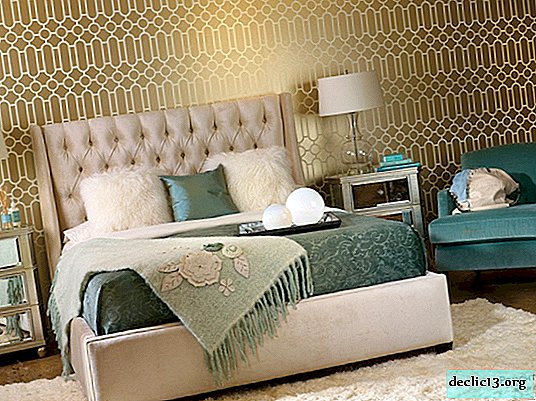What laboratory drying ovens exist, and their features
Laboratory work often requires specialized equipment. One of these products is a laboratory oven, an assistant to perform a large number of operations. Today, there are many modifications of this device, which must be studied in order to make the right choice.
Appointment
The main purpose of the oven is to dry certain items. During laboratory tests, it becomes necessary to quickly dry dishes or other components needed for analysis.
The peculiarity of this product is that it has precise temperature settings. That is why the drying cabinet is also designed to store samples requiring a certain temperature regime. In addition, sterilization is one of the main functions of such devices. The product is used for operations based on the use of thermal procedures.
In addition to the listed functions, the drying laboratory cabinet has the following purpose:
- processes powder products of high humidity;
- prepares materials for testing metals, ceramics and glass;
- thermally processes plastic;
- sterilizes instruments, which is relevant for medical laboratories;
- prepares samples and samples for pharmaceutical, chemical research.
In addition to these fields of application, such devices are used in agricultural sectors, for example, when drying grain and its products. The oven is able to burn, age, cure, harden many materials.





Types and characteristics
Today, manufacturers of equipment for laboratories offer the following types of drying units having certain technical characteristics:
- Vacuum models - designed for pumping air from the device’s chamber, therefore a pump is installed in this type of cabinet. The operating temperature range ranges from 5-250 degrees. The most common vacuum indicator is 76 mm Hg;
- steam cabinets - the saturated steam that is inside carries out the drying and sterilization of necessary items. The temperature of the steam is 130 degrees, while the pressure is 0.2 MPa;
- bactericidal products - well suited for the disinfection of medical instruments. The design has several bactericidal lamps that are turned on using a remote control;
- dry-heat models - in such cabinets there is dry air that can disinfect objects. The temperature of various models is from 50 to 300 degrees;
- infrared drying cabinets - materials with high humidity are perfectly dried in such models. The heating temperature of such products does not exceed 100 degrees;
- convection options - in such devices forced ventilation is carried out, which allows to release moisture and steam. The maximum temperature is 350 degrees.
All proposed models differ from each other in the volume of the drying chamber and the temperature limit. Therefore, it is necessary to select a product for the purpose of the laboratory.
 Vacuum
Vacuum Infrared
Infrared Convection
Convection Sukhozharova
SukhozharovaMaterials of manufacture
Inside the oven, high air temperatures constantly circulate. To do this, manufacturers use strong raw materials, such as stainless steel, as production materials. Depending on the configuration of the model, materials may vary.
The finished sheet steel is coated with special powder paints that resist thermal effects. The cabinet surface must not be subject to corrosion, therefore it is also coated with additional protective compounds.
For added convenience, many manufacturers complete their products with special stands. They are designed to position the cabinet on the floor, as well as for convenient and quick access to the device. Thermal insulation material is often placed inside the cabinet, contributing to a uniform temperature distribution.
Another important component of the product is the temperature controller. It is manufactured in accordance with standards and established standards. The temperature controller material is metal. Outside, the cabinet is also equipped with thermal insulation in the form of basalt fiber. This is done under comfortable working conditions while heating the device.
On the electronic panel there is a temperature control board, which also contains signal LEDs that inform the employee about the progress of the drying procedure.
 Scheme
Scheme Temperature controller
Temperature controllerShape and size
The most common forms for ovens are square and rectangular options. For small laboratories, the square type product with a massive convenient handle is the best choice. For large drying volumes, it is proposed to consider the option of a rectangular cabinet with two doors.
Externally, the laboratory drying cabinet is similar to a safe for storing money, but it performs other functions. Such equipment has a certain power and volume, allowing you to accommodate a large number of tools, samples or products inside 1 time.
Depending on the size of the chamber, the temperature specifications declared by the manufacturer may deviate from the norm.
According to the volume of the device, one can distinguish such options that are popular in laboratories and industrial sectors:
- small - the volume of such units ranges from 60 to 200 liters. The models are ideal for drying medical instruments and their sterilization. In such cabinets it is convenient to dry dishes and small items;
- medium-sized cabinets - the volume of the inner chamber varies from 250 to 1000 liters. Well used for processing products: drying, drying and heat exposure. Often, models are equipped with additional equipment - hooks, trays and pallets;
- large models - suitable for industrial enterprises operating on a large scale production and research. The volume of the camera starts from 2000 liters and ends with an indicator of 8000 liters. Painted parts are dried in the cabinets, electrodes are pierced and vulcanization is carried out. Shelves are additionally reinforced with metal, and the component loading system is also changing.
It is allowed to load materials or tools through the upper compartment, by means of doors or by means of a passage opening mechanism.




The nuances of choice
Before making the right choice, experts advise to study all the features of the work and configuration of the cabinet. The first thing you need to pay attention to is the operating temperature range. It varies in models designed for different applications. In addition, when selecting it is worth exploring the following parameters:
- equipment - check how many shelves the product contains. The capacity of the cabinet will depend on this indicator;
- type of convection - there are two types: forced and natural. The advantage of forced convection is that it provides a constant temperature in all areas of the cabinet. Natural ventilation is distinguished by the intake of air through openings in the housing and its exit through a special tube;
- volume - depending on the scope and number of objects, it is worth choosing the optimal chamber volume;
- a set of functions - the cabinet can dry, steam, vulcanize, draw moisture - a large number of functions;
- design - check if the product has an internal light, a viewing window and a hood.
Having studied the question of choosing a drying laboratory cabinet, you can safely carry out the selection of products based on the needs of the enterprise.
Video
Photo































